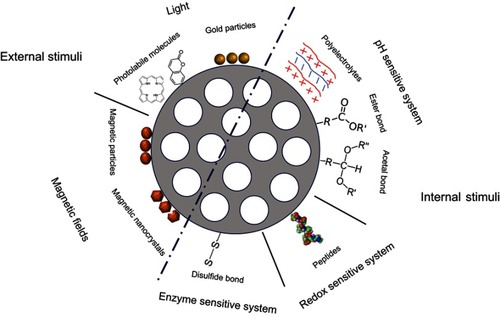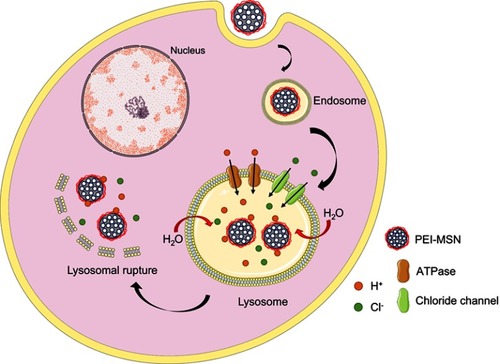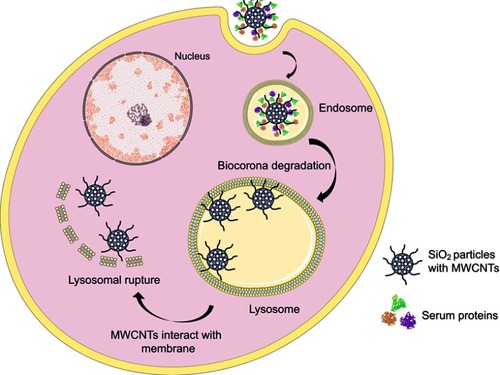Figures & data
Figure 1 Schematic representation of different delivery systems. From left to right; liposomes, micelles, carbon nanotubes, dendrimer and gold (yellow) and iron (brown) nanoparticles.

Figure 2 Image representing the blood transport mechanism of nanomaterials or molecules from normal tissue (left) and the enhanced permeability and retention effect in a tumor.

Figure 3 Schematic description of active targeting possibilities on mesoporous silica particles (left). Dual targeting example (right).

Table 1 Different gatekeepers that can be used to maintain the “zero release” of the drug and to trigger drug release
Figure 4 Examples of different gatekeepers that can be used to maintain the “zero release” of the drug inside mesoporous silica particles and to trigger on demand the release.




